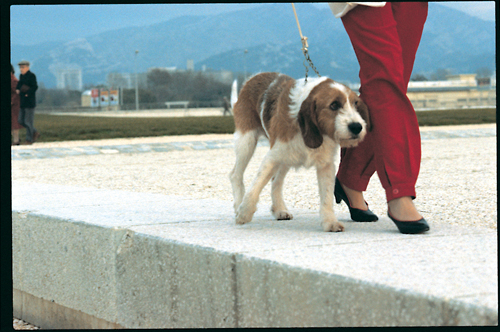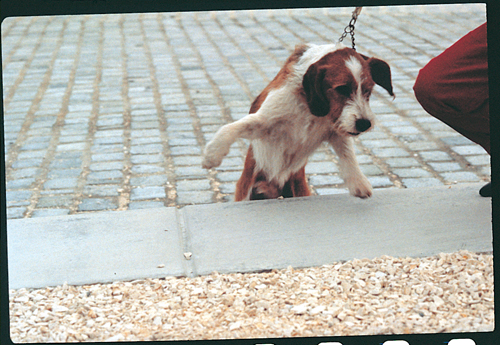Small Animal Orthopaedics Q&A 14
A photograph of a hunting dog with a chronic weight-bearing lameness of the right forelimb. The elbow is held in abduction and the antebrachium and paw are swung in a lateral arc during the swing phase of the stride. The lameness is accentuated when the dog is walked up steps.
| Question | Answer | Article | |
| What is the diagnosis? | The lameness is characteristic of contracture of the infraspinatus muscle, a disabling condition that primarily affects hunting and working dogs. The condition is probably the result of trauma, but the exact etiology is unknown. Affected dogs usually have a history of acute lameness and swelling in the shoulder region associated with strenuous activity. The initial clinical signs resolve rapidly, but three to five weeks later the characteristic lameness develops and becomes progressively more severe. The infraspinatus muscle originates at the infraspinous fossa of the scapula and has its tendon of insertion on the greater tubercle of the humerus. It acts mainly to abduct and externally rotate the shoulder. As the muscle undergoes progressive fibrosis and contracture, a mechanical lameness develops with limited extension and results in persistent external rotation and abduction of the humerus. The characteristic circumduction movement of the affected limb can be accentuated if the dog is forced to walk up stairs. |
[[|Link to Article]] | |
| What is the treatment for this condition? | The lameness can be resolved by performing a tenotomy of the infraspinatus muscle. The tendon should be approached between the acromial and spinous heads of the deltoid muscle. All adhesions between the infraspinatus muscle and the joint capsule must be freed. This is done by sharp dissection and completed by aggressive flexion and extension of the scapulohumeral joint until a full range of motion is obtained. |
[[|Link to Article]] | |

